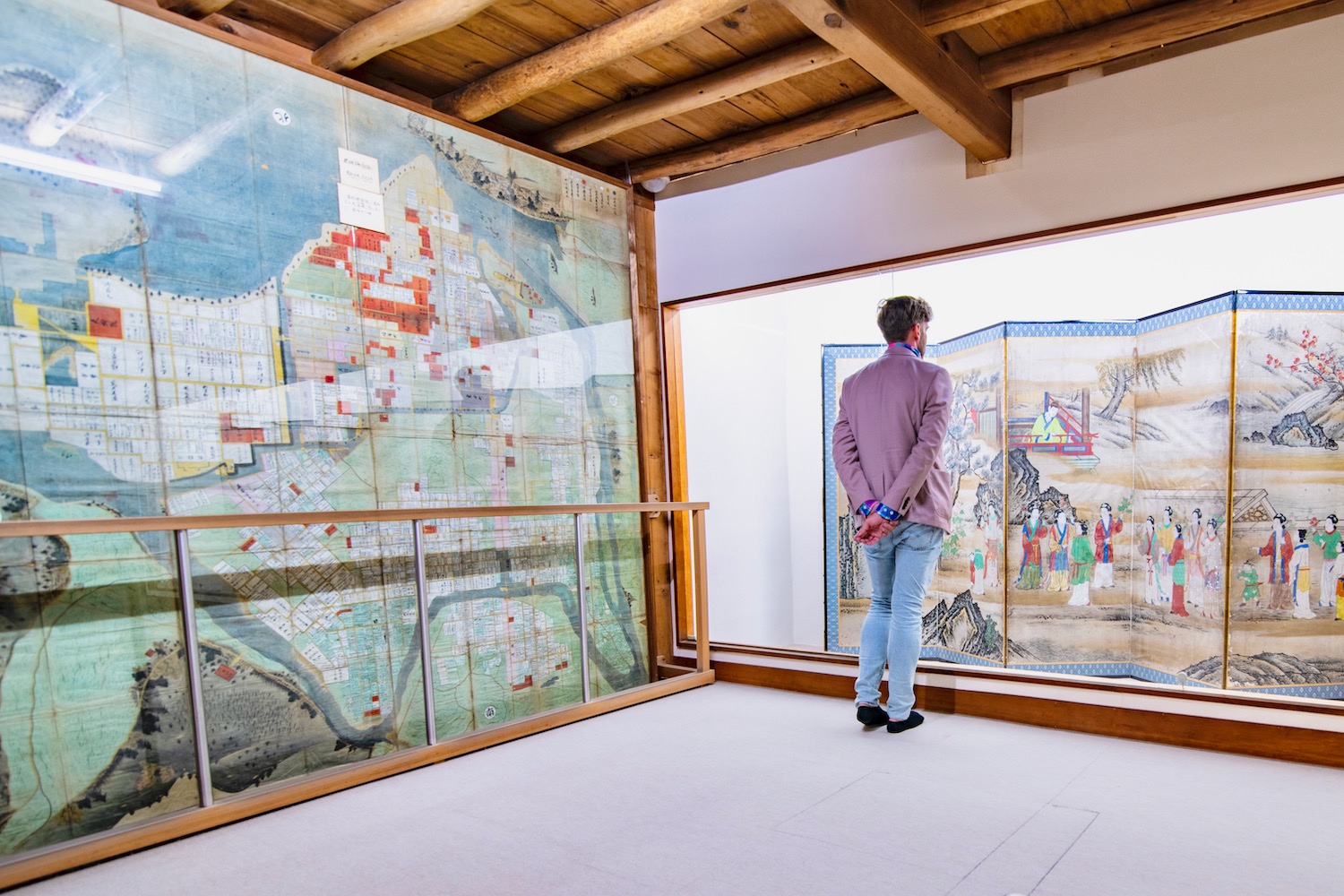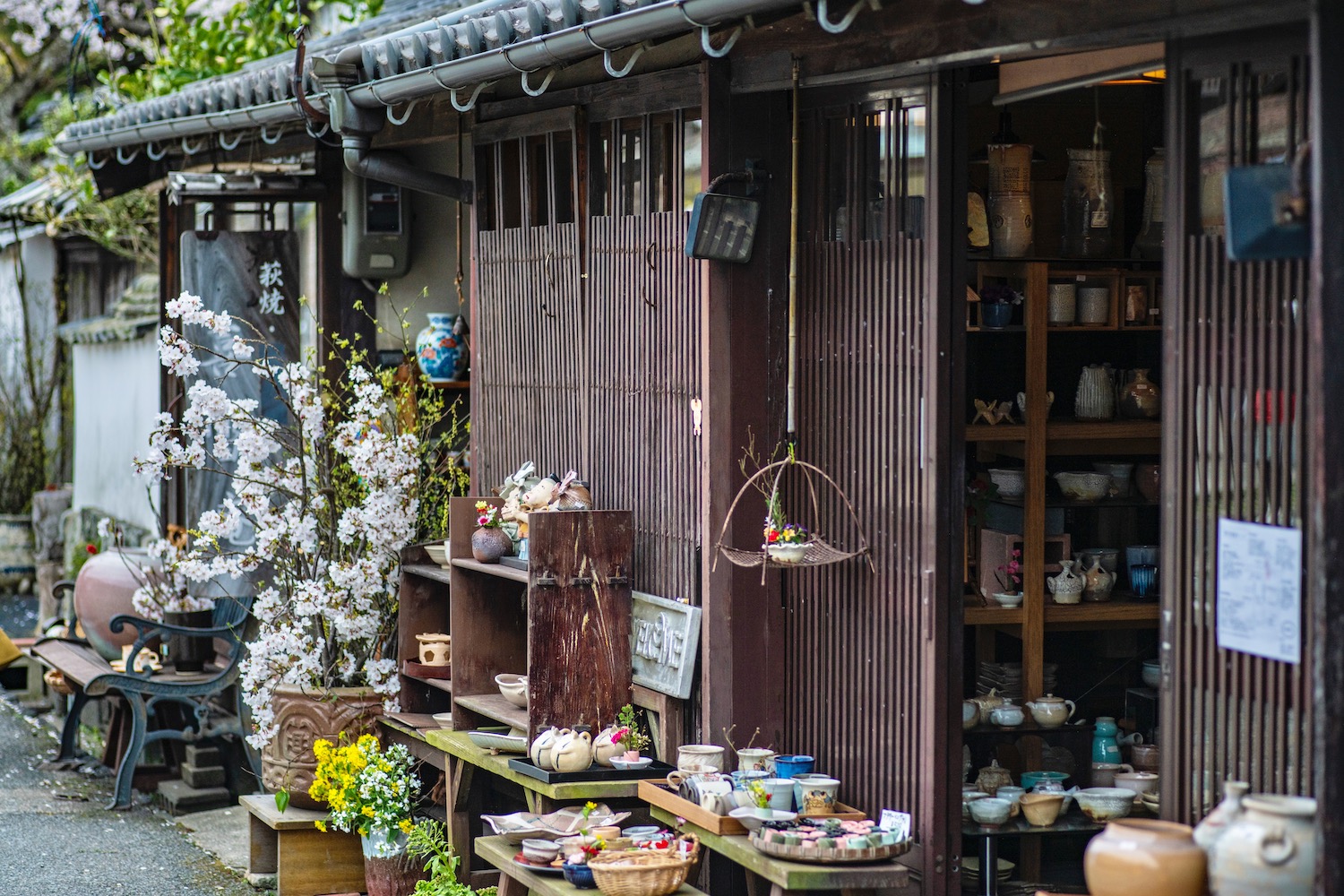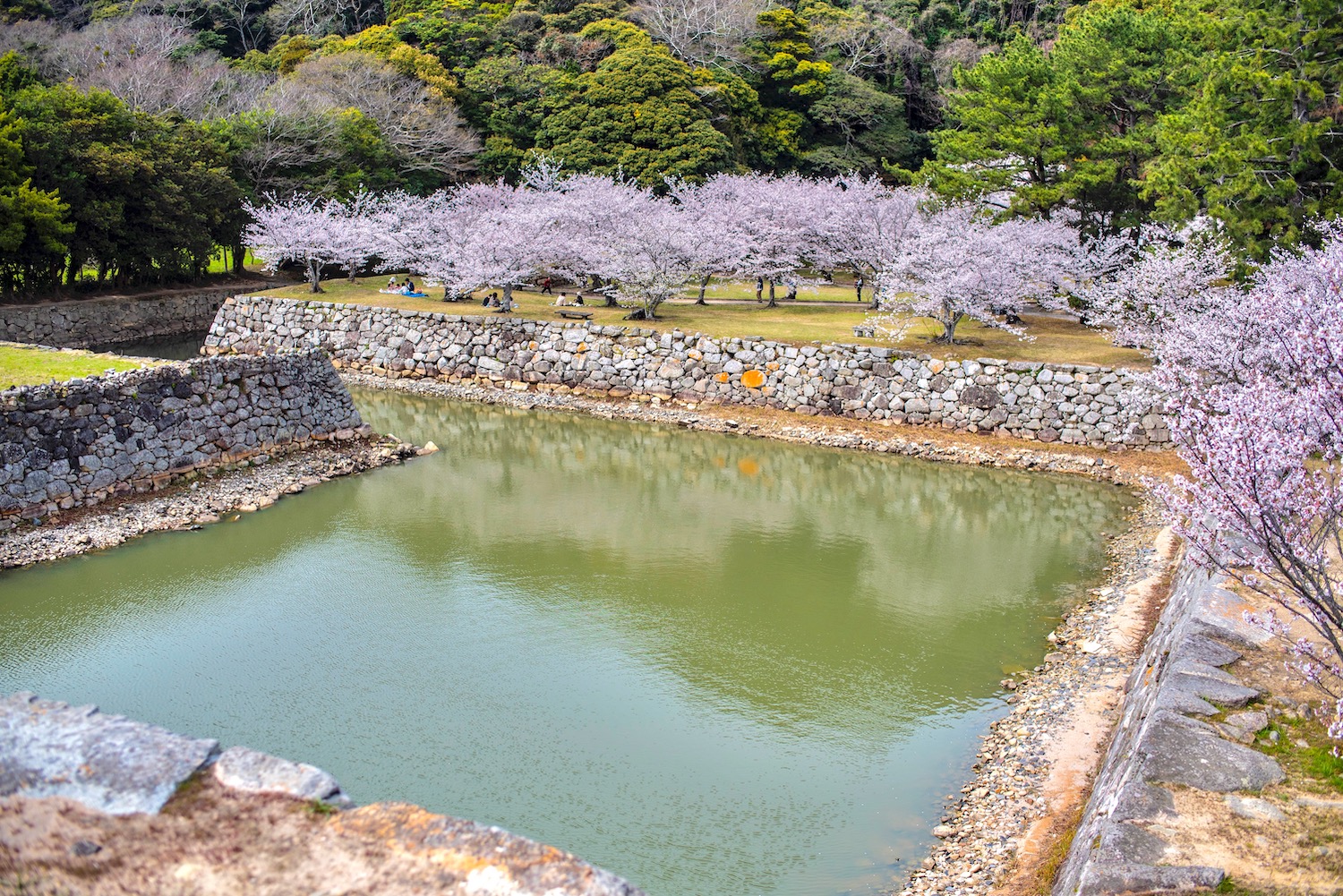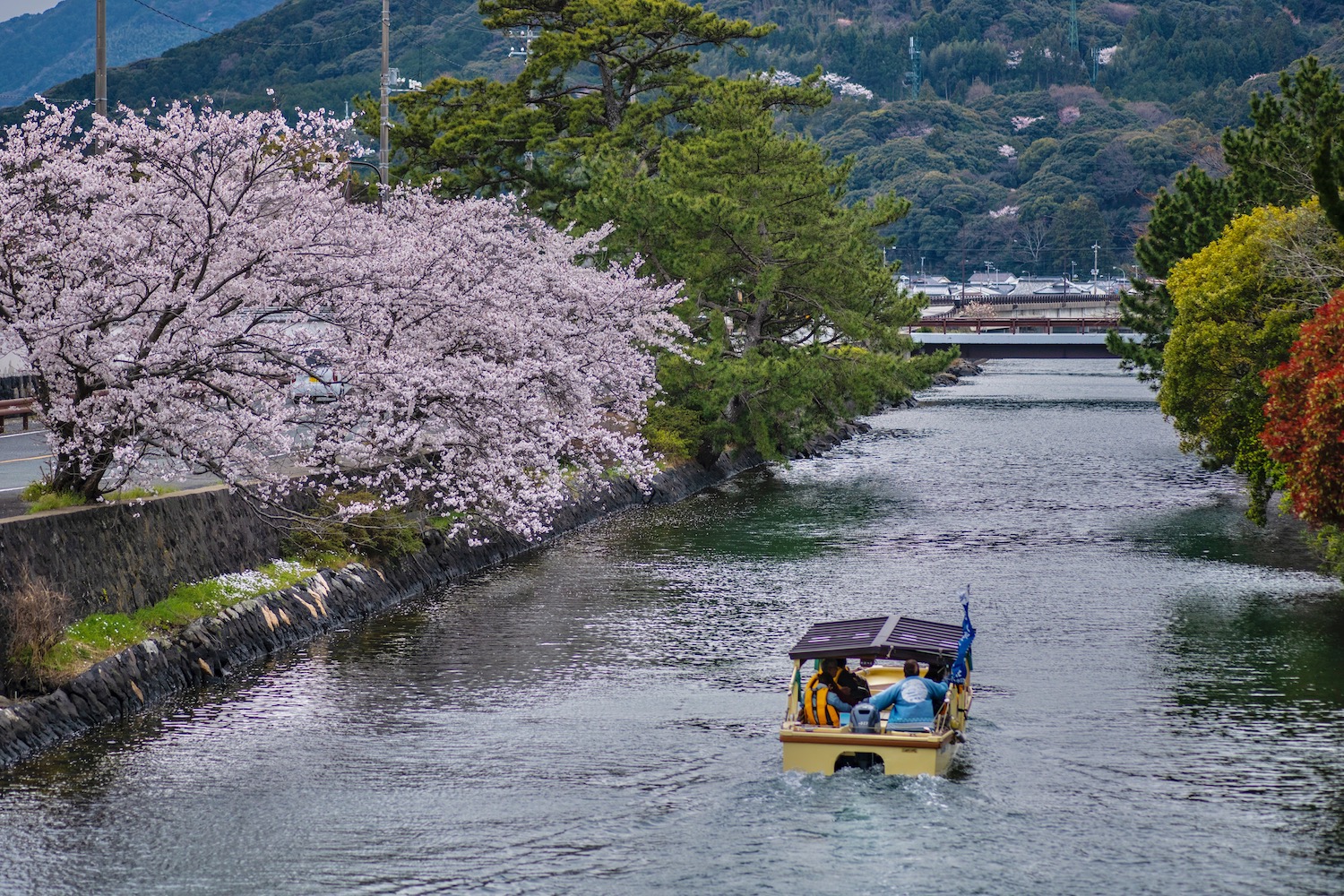Shortly before I left Yamaguchi prefecture’s magical town of Hagi—I was literally only a block or two from the parking area—an elderly woman shouted across the Samurai-era street to me.
“Where are you from?” she asked in English, though I answered in Japanese that I was American. We chatted for just a few minutes, but the conversation was grounding and life-arriming; Taiko (“beautiful girl,” she said, explaining the translation of her name. “Or maybe strange girl.”) was kind, gracious and warm.
Is Hagi worth visiting? I would’ve said “yes, definitely!” even before meeting her, so don’t worry: You’ll enjoy the town if no friendly local stops you in your tracks.
How to Get to (and Around) Hagi
Although there are a couple of daily buses from Hiroshima to Hagi (and local trains traveling westward from cities like Matsue and Tottori to the east), the reality is that a private car is your best way to get to (and, perhaps, around) Hagi. This is true whether you live in Japan and have your own vehicle, and rent a car in Yamaguchi City or Shimonoseki, and see Hagi as part of a road trip around Yamaguchi prefecture (which I highly recommend).
In terms of exploring Hagi, there are two basic options. All the places I’ll be recommending are accessible on completely on foot once you’ve arrived in central Hagi, assuming the weather is pleasant and you’re relatively fit. However, in some instances it might make more sense to drive certain places, though I will leave it to you and your own situation to decide when this is.
How to Get to (and Around) Hagi
Get lost in Hagi Castle Town

Although Hagi’s castle is in ruins (more on that in a minute), the surrounding Hagi Castle Town is one of Japan’s best-preserved Samurai districts. Whether you tour warrior homes, chat with locals like Taiko or enjoy the juxtaposition of palm trees and Mikan (orange) trees with traditional architecture, it’s extremely satisfying.
Shop for Hagi-yaki

There’s also a great deal of shopping in Hagi, a large percentage of which focuses on Hagi-yaki pottery. Several shops are dedicated entirely to this, and while I don’t think it should be the center point of your Hagi itinerary, it certainly adds some artistic context.
Relax at the Hagi Castle Ruins

The bad news? Hagi’s castle is in ruins, with not a single structure besides the old walls and moats left intact. The good news? The park the Hagi Castle Ruins comprises is seriously beautiful and relaxing, especially during cherry blossom season (and particularly if you visit the on-site Hagi-yaki Museum).
Scale Mt. Shizuki

If one of the things to do in Hagi that appeals to you is hiking, I recommend following the small (and, sadly, easy to miss) trail near the back of the castle ruins. While signs along it warn you that there is no viewpoint (展望台なし in Japanese) atop Mt. Shizuki, there is a clearing through the trees that give you a bird’s eye view.
Take a boat tour

Upon entering the castle town along the main road from the east, you’ll notice a small boat dock along the canal just outside the walls. While these boat tours aren’t highly publicized, I highly recommend taking one. Most not only head through the town itself, but also out to sea, providing another perspective to appreciate.
Should You Stay Overnight in Hagi?
Although I have never spent the night in Hagi in spite of having been there multiple times, I do want to do it some day—and I think there’s value in doing so. The town isn’t huge, and at least as of now there are virtually no tourists here. At the same time, I’m guessing that being here in the evening or early morning would be even more special than a day time visit, shooting this already fabulous town up into the stratosphere.
One problem, of course, is that there simply aren’t a lot of Hagi hotels, even if some of the ones that exist (Hagi no Yado Tomoe; Kominka Guesthouse Hagi Akatsukiya) are fabulous. Additionally, you’ll want to be mindful of where you stay, as some accommodations are not anywhere near the castle town, but in Hagi Onsen, which is on a peninsula relatively far away.

Other FAQ About Visiting Hagi
What is Hagi famous for?
Hagi isn’t especially famous if we’re being honest, especially not among foreign tourists. However, to the extent that (mostly Japanese) people know Hagi, they know it for two things: 1) Its well-preserved Samurai district; and 2) Hagi-yaki pottery.
How far is Hagi from Tokyo?
Hagi is almost 1,000 km (about 600 miles) from Tokyo as the crow flies—it’s very far away. Realistically, you’ll need to fly to Yamaguchi or Hiroshima, and rent a car (or, if the timing of your flight lines up, ride a bus) from there to Hagi. It’ll take you most of the day to get there, in any case.
What is there to do in Hagi, Japan?
Most of the things to do in Hagi center around the Samurai-era Hagi Castle Town, which is both the geographical center of the city, as well as where you find most of its attractions. However, you can also walk just north of town to relax on the beach, or hike up to the Mt. Shizuki viewpoint behind the Hagi Castle Ruins.
The Bottom Line
Is Hagi worth visiting? Absolutely—and not just because of the incredibly friendly locals you find there, though even a short conversation with one of them could take your trip to the next level. Home to one of Japan’s best-preserved Samurai districts, Hagi is among my favorite historical cities in the country, even if its location makes it cumbersome to access. Whether you come on a day trip from Shimane prefecture (or elsewhere in Yamaguchi) or stay overnight, I have faith that it will end up being one of your favorite places as well. Make your next trip to Japan your favorite when you hire me to plan it.






